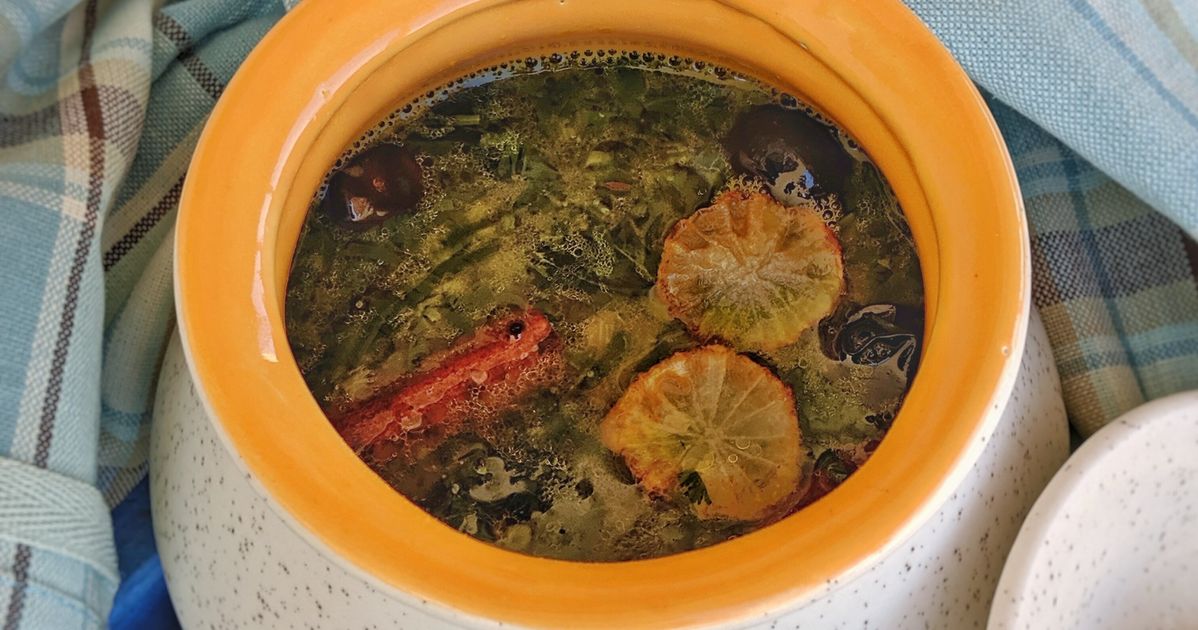prasad1
Active member
When I was a child growing up in Goa, coughs and colds came with a silver lining: my family’s standard remedy of a shot of brandy-like feni, with a little sugar to soften the taste. It cleared up blocked sinuses in a trice. Sometimes, the feni was set on fire to burn the alcohol—a spectacle that worked better than the ‘medicine’ to cheer us up. Other treats that made an appearance in times of sickness included pez (congee) and the nourishing and tasty tizann, a warm porridge of nachni (ragi), local palm jaggery, and coconut milk.
Pretty much every Indian home has their own version of ‘sick’ food, fed to loved ones who are battling discomforts such as indigestion, colds, coughs, fever, headaches, period pain, and the like. While their medicinal properties may be debatable, these home remedies deliver what every afflicted soul needs: comfort, warmth, and a soothed belly.
India offers a rich diversity of soups, watery dals, and herbal decoctions to replace lost fluids.
A common decoction drunk across the country is the Ayurvedic kaadha, made by boiling down herbs (especially tulsi) and spices (pepper, cardamom, cinnamon, cloves, licorice) into a healing beverage.
In Sidharth Mehta’s Gujarati home, hing mari ukalo(a hotcombination of asafoetida, black pepper powder, lemon and salt) is a go-to for stomach upsets. In Rajasthan and Gujarat, raab comes to the rescue for tummy troubles. “It is made with ghee, flour, and jaggery and thinned with water/milk, and spiked with spices or soonth (dry ginger) powder. It is versatile in consistency and type of flour used, fills you up, and gives the appetite a boost,” says development professional and food blogger Sheetal Bhatt, whose earliest memory of raab is her grandmother making it for her.
Rice could very well be considered the superfood of the sick. It can be served with invigorating ghee or cooling yoghurt, or be cooked into an invalid-friendly gruel such as pez or with dal into a hearty khichdi.
“Curd rice is my cure-all. It is fairly easy to make, the ingredients are accessible and local and it cuts across barriers… everyone eats it,” says culture writer Sushmita Sundaram. “It is cooling, fills you up without weighing you down, helps with digestion, is easy on the stomach and nourishing.”

 www.huffingtonpost.in
www.huffingtonpost.in
Pretty much every Indian home has their own version of ‘sick’ food, fed to loved ones who are battling discomforts such as indigestion, colds, coughs, fever, headaches, period pain, and the like. While their medicinal properties may be debatable, these home remedies deliver what every afflicted soul needs: comfort, warmth, and a soothed belly.
India offers a rich diversity of soups, watery dals, and herbal decoctions to replace lost fluids.
A common decoction drunk across the country is the Ayurvedic kaadha, made by boiling down herbs (especially tulsi) and spices (pepper, cardamom, cinnamon, cloves, licorice) into a healing beverage.
In Sidharth Mehta’s Gujarati home, hing mari ukalo(a hotcombination of asafoetida, black pepper powder, lemon and salt) is a go-to for stomach upsets. In Rajasthan and Gujarat, raab comes to the rescue for tummy troubles. “It is made with ghee, flour, and jaggery and thinned with water/milk, and spiked with spices or soonth (dry ginger) powder. It is versatile in consistency and type of flour used, fills you up, and gives the appetite a boost,” says development professional and food blogger Sheetal Bhatt, whose earliest memory of raab is her grandmother making it for her.
Rice could very well be considered the superfood of the sick. It can be served with invigorating ghee or cooling yoghurt, or be cooked into an invalid-friendly gruel such as pez or with dal into a hearty khichdi.
“Curd rice is my cure-all. It is fairly easy to make, the ingredients are accessible and local and it cuts across barriers… everyone eats it,” says culture writer Sushmita Sundaram. “It is cooling, fills you up without weighing you down, helps with digestion, is easy on the stomach and nourishing.”

These Indian ‘Sick’ Foods Are Like A Hug From The Inside
Why stick to boring chicken soup?
